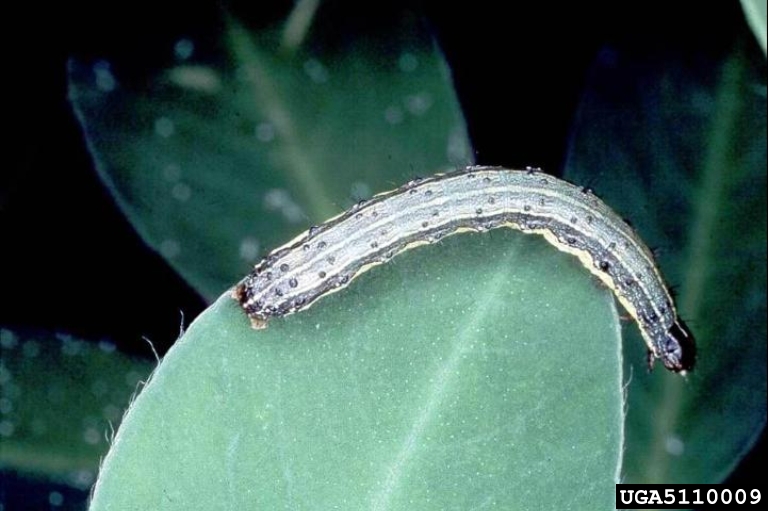For the past several years we have been using pheromone traps to monitor fall armyworm moth flights at the Tidewater Center. The numbers we have been catching these past few days are much higher than what we have normally seen. Fall armyworm has two strains. They are identical in appearance but one prefers to feed on grasses (the grass strain) and the other prefers to feed on legumes, cotton and other hosts. We cannot tell which strain we have by looking at the moths, but we do know that fall armyworms can infest peanuts, cotton, sorghum, turfgrass and many other crops. We have not found any fall armyworms in the peanut fields in the vicinity of the adult traps, but if they are going to occur, we would expect to see them next week. Moths have to mate, lay eggs on the peanut leaves, and worms hatch from the eggs—typically a 5 to 7 day cycle. In peanuts there would have to be a lot of worms to warrant a treatment. This late in the season, and with the extensive plant canopies that most peanut fields have, it would take at least 6 worms per row foot to trigger a spray. It has been many years since we encountered that many worms in a peanut field—but, we strongly suggest that you spot check fields for these critters.

